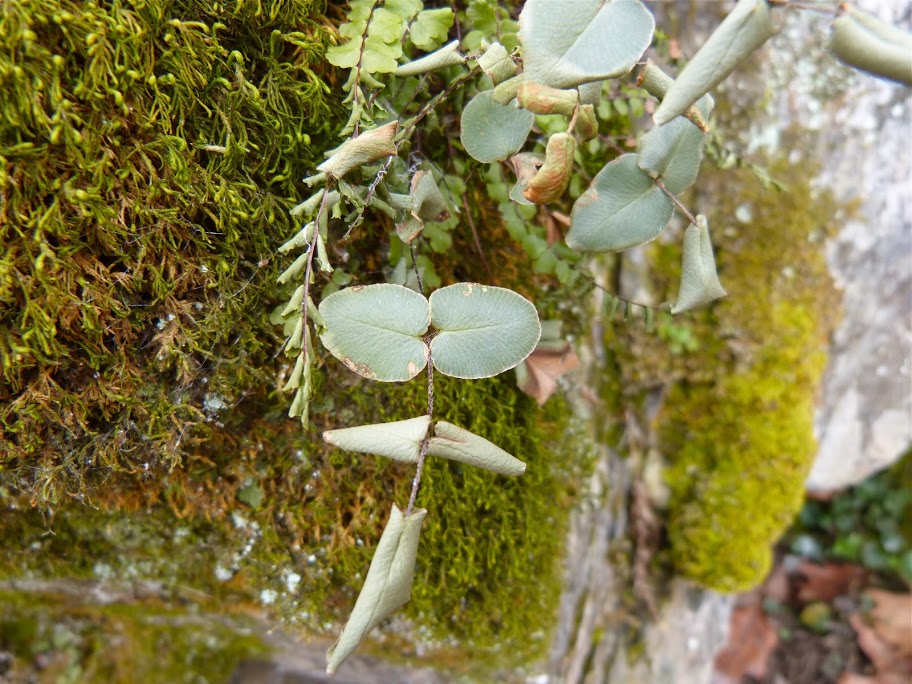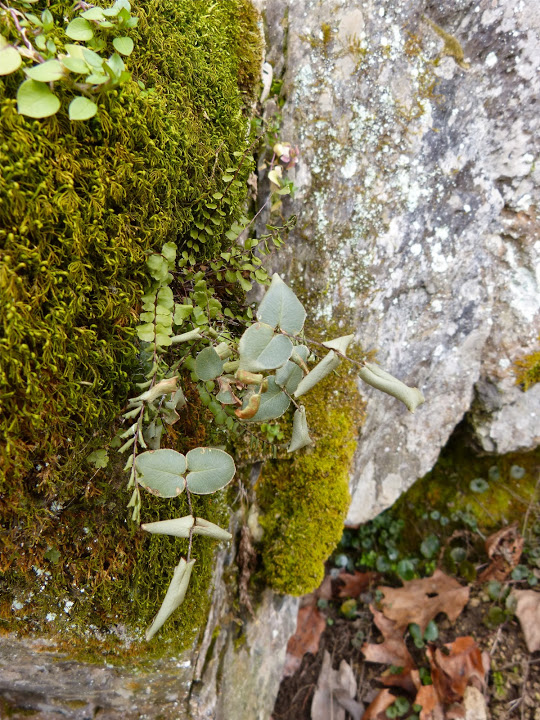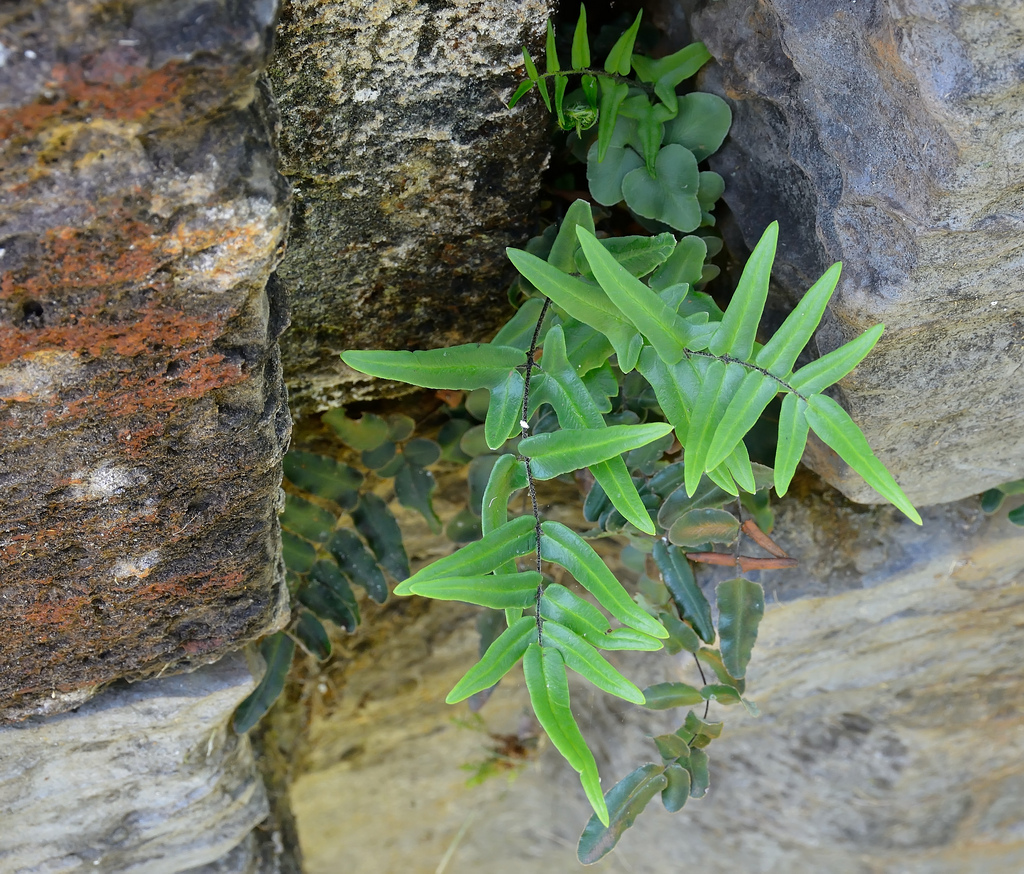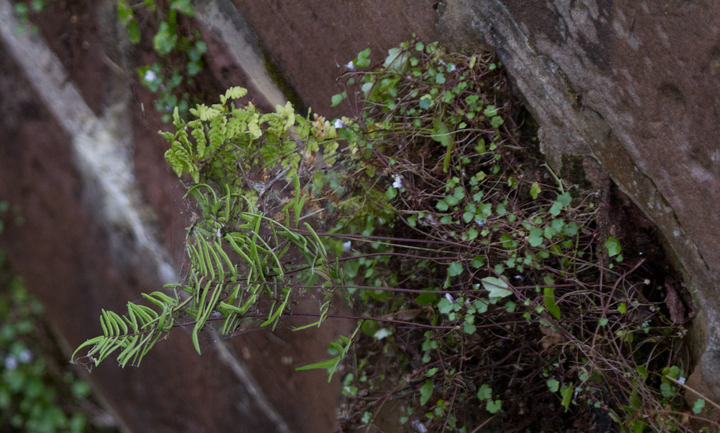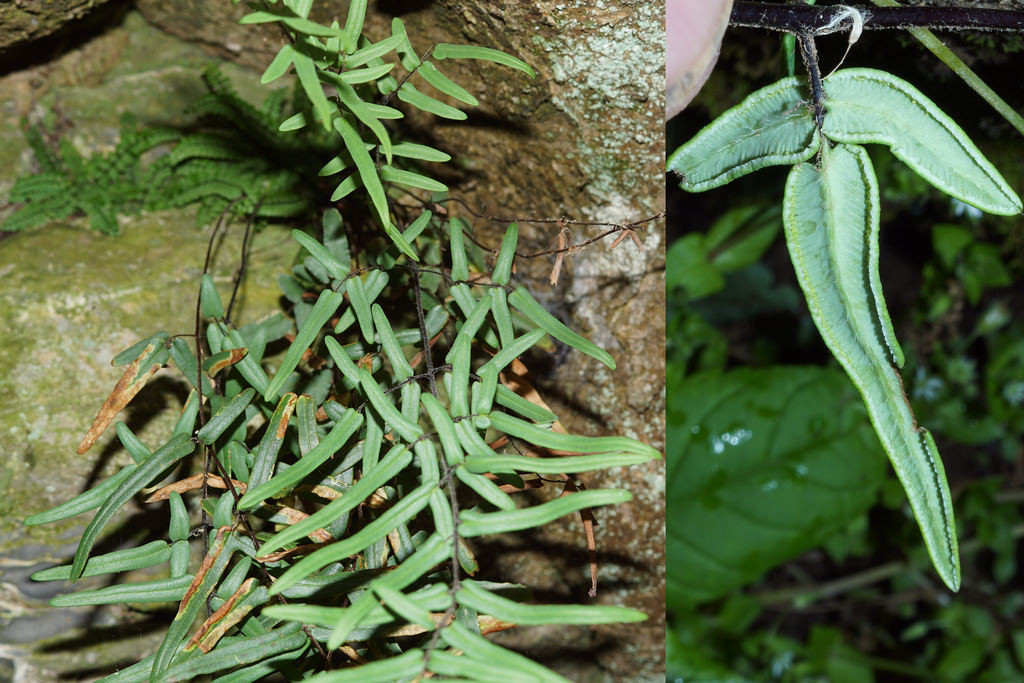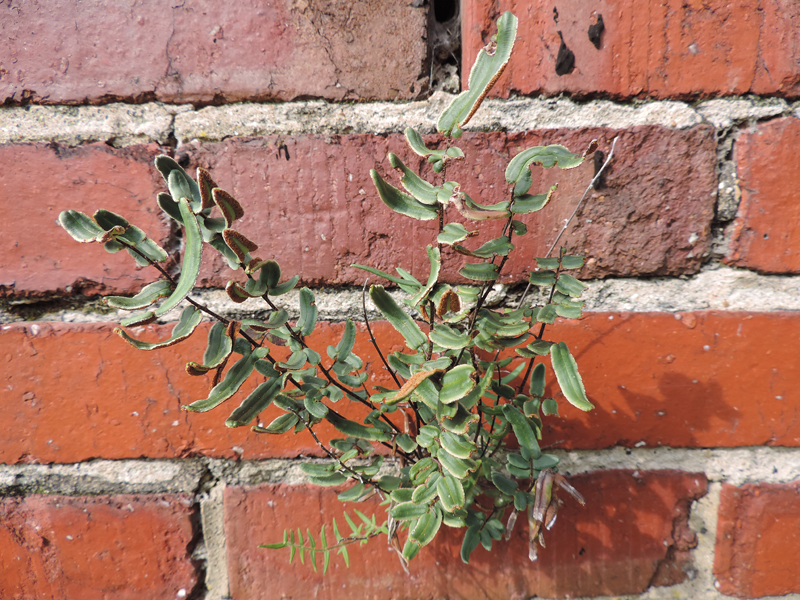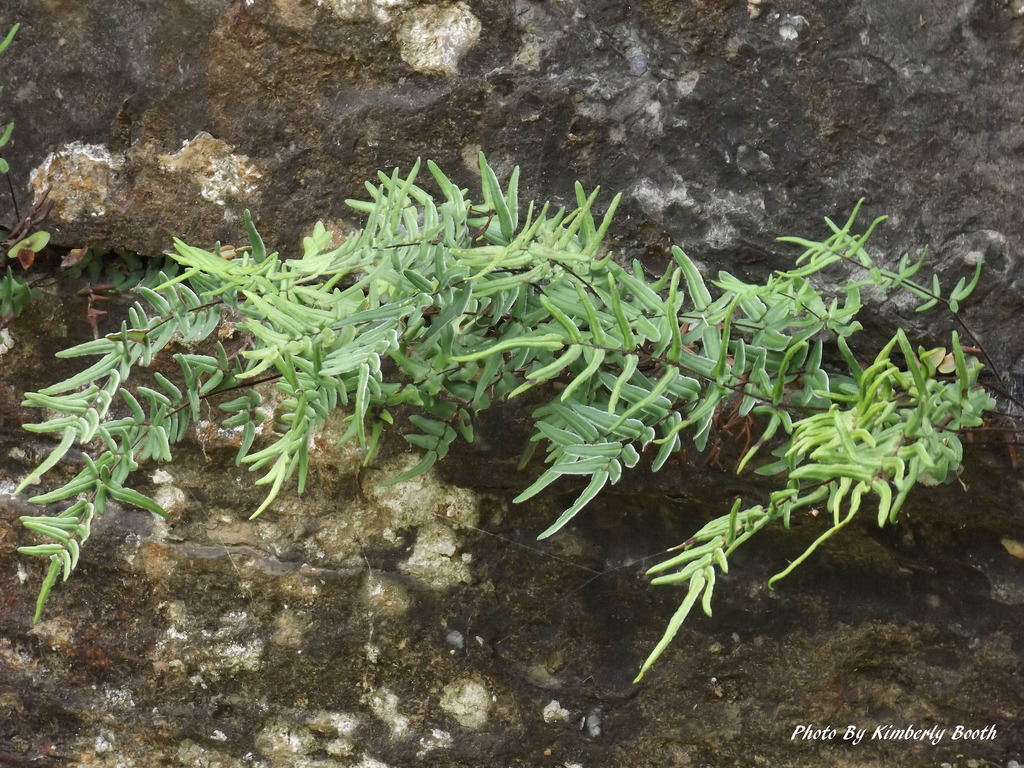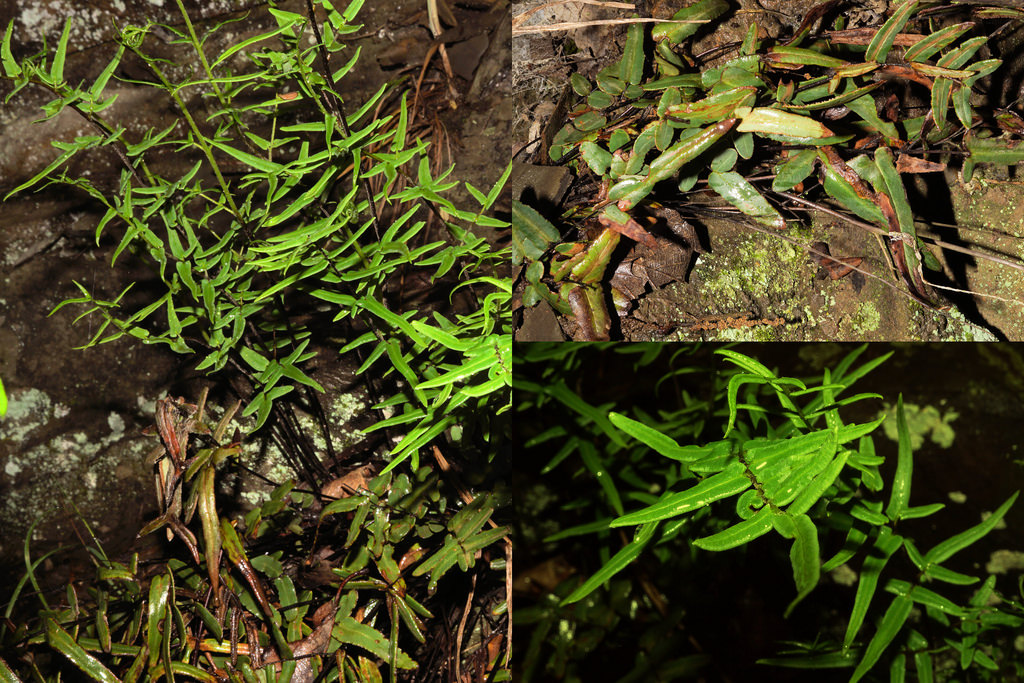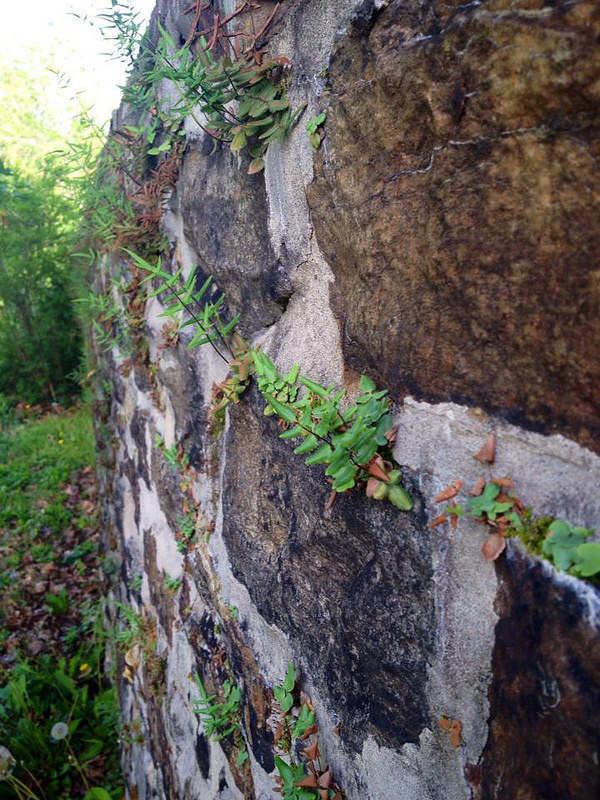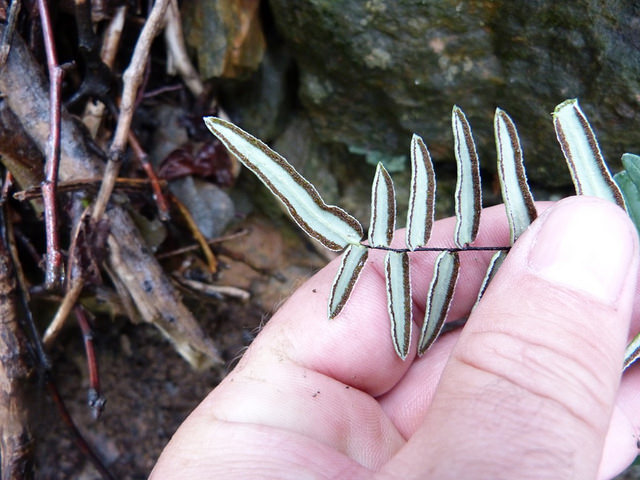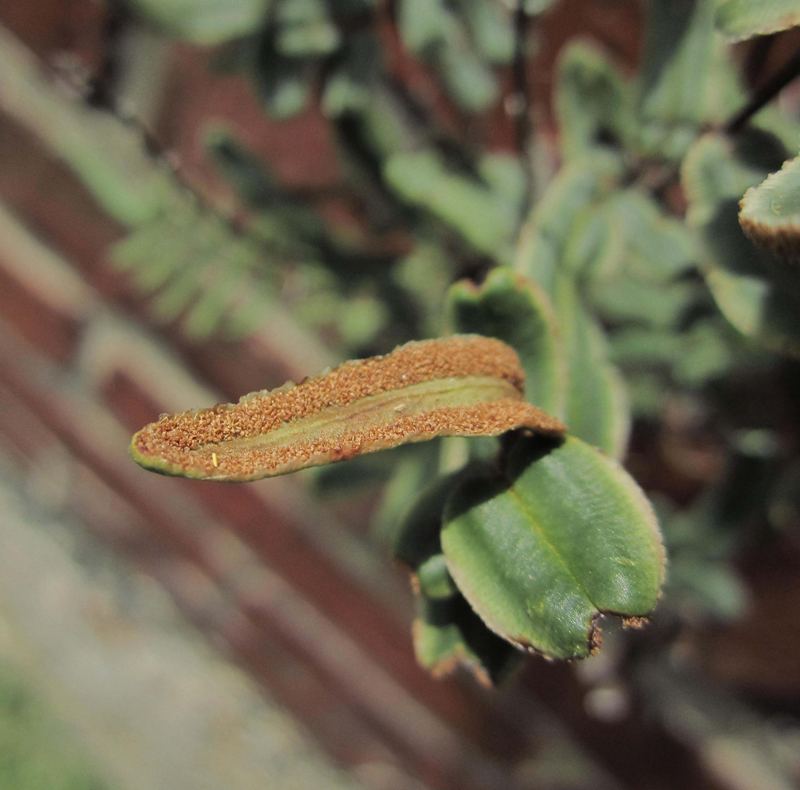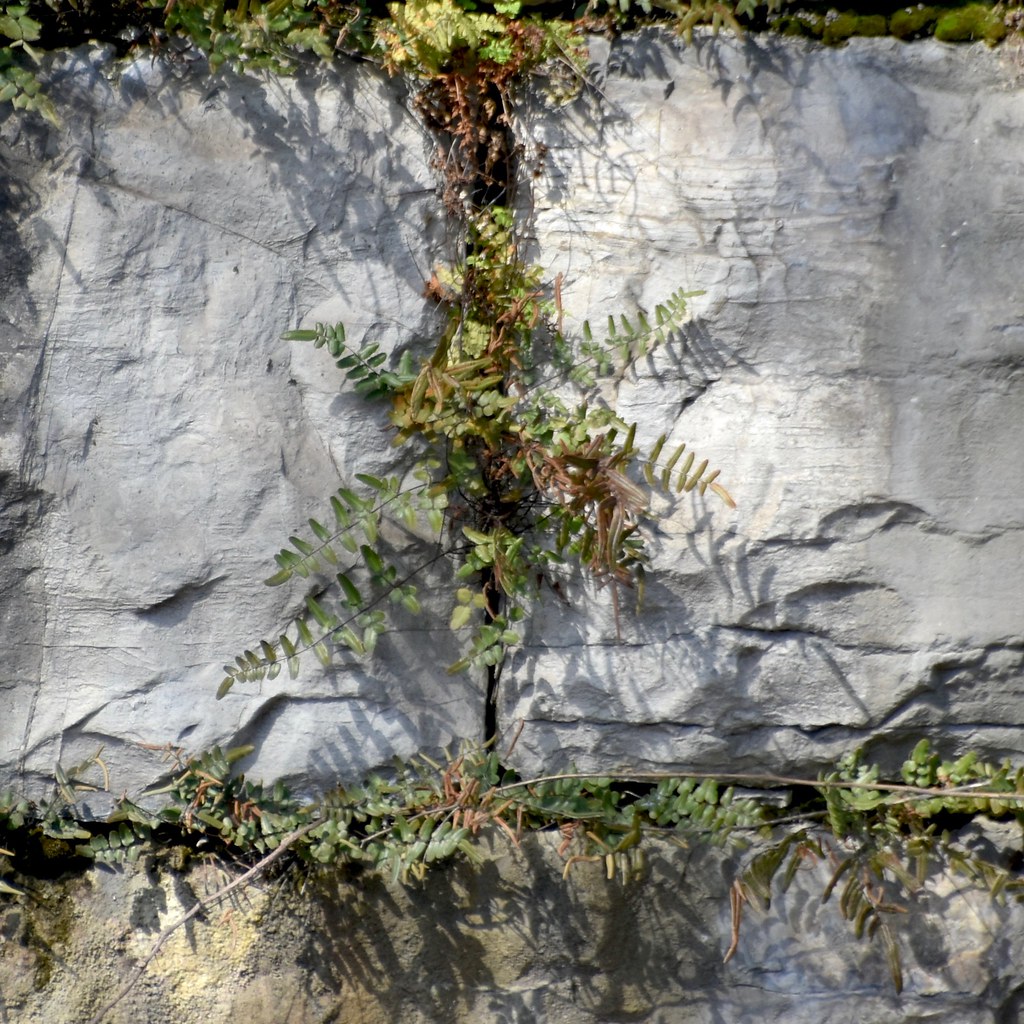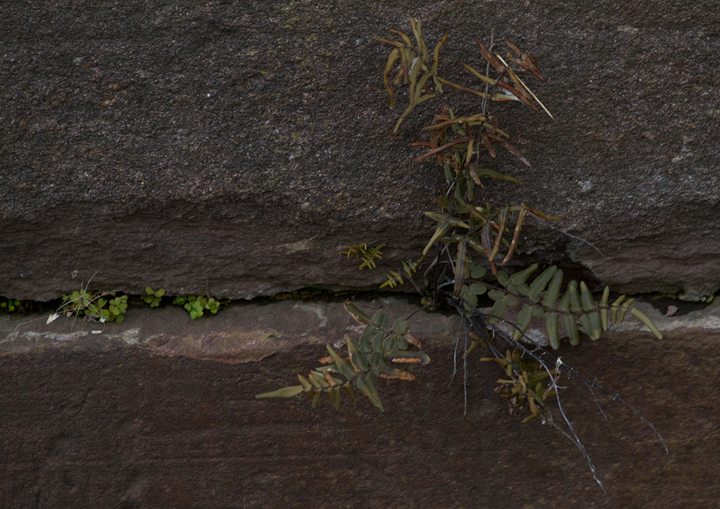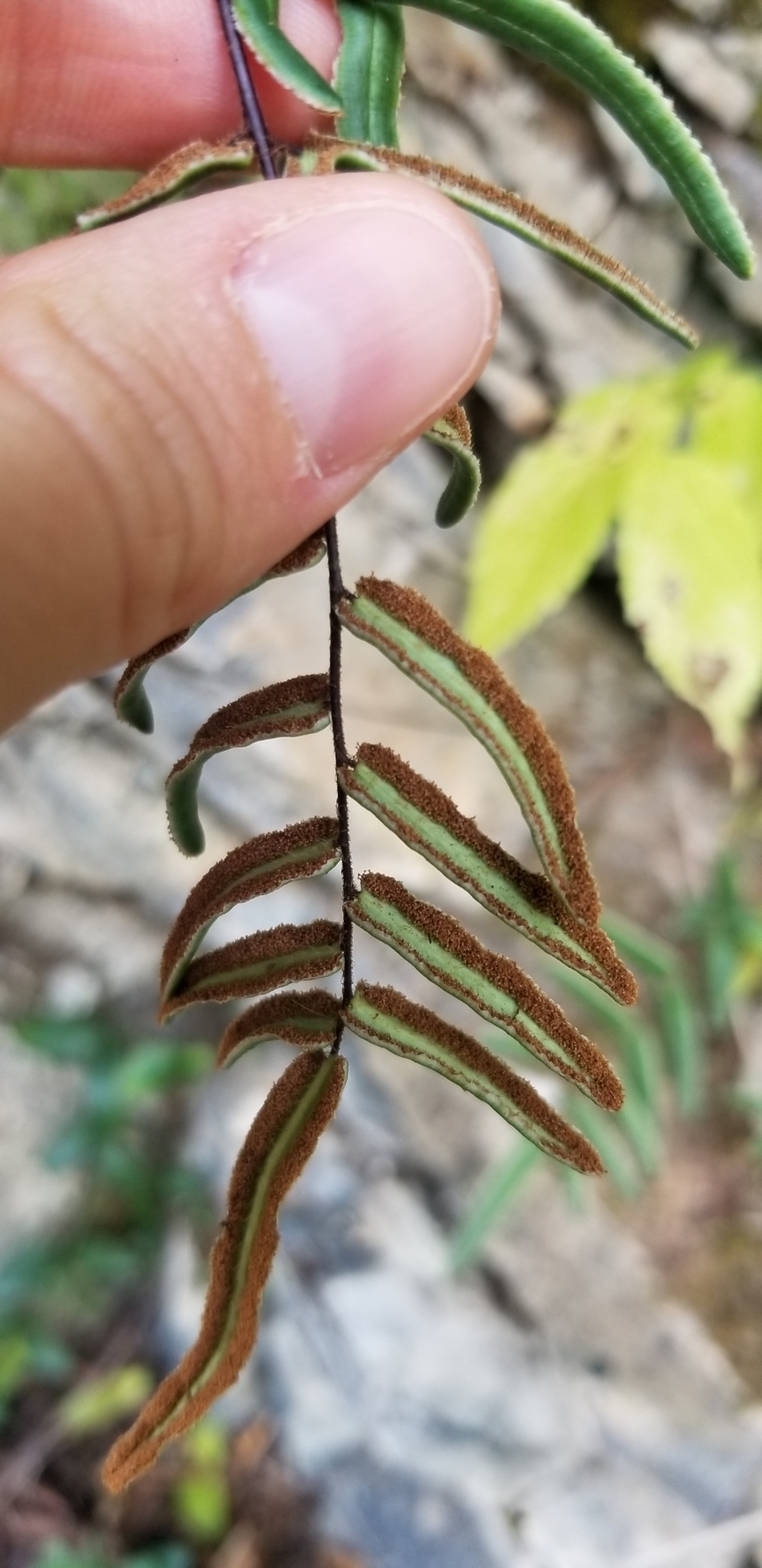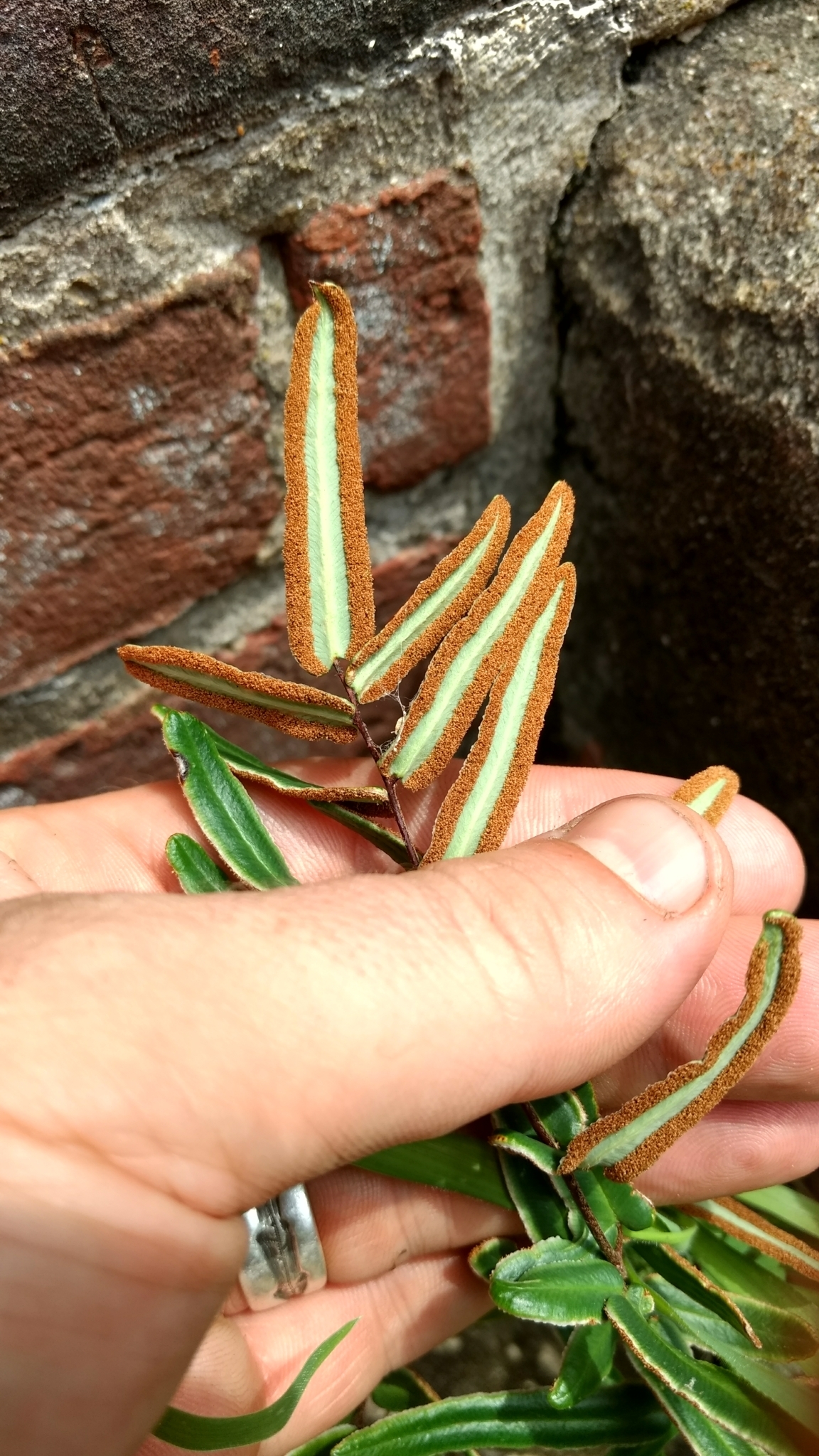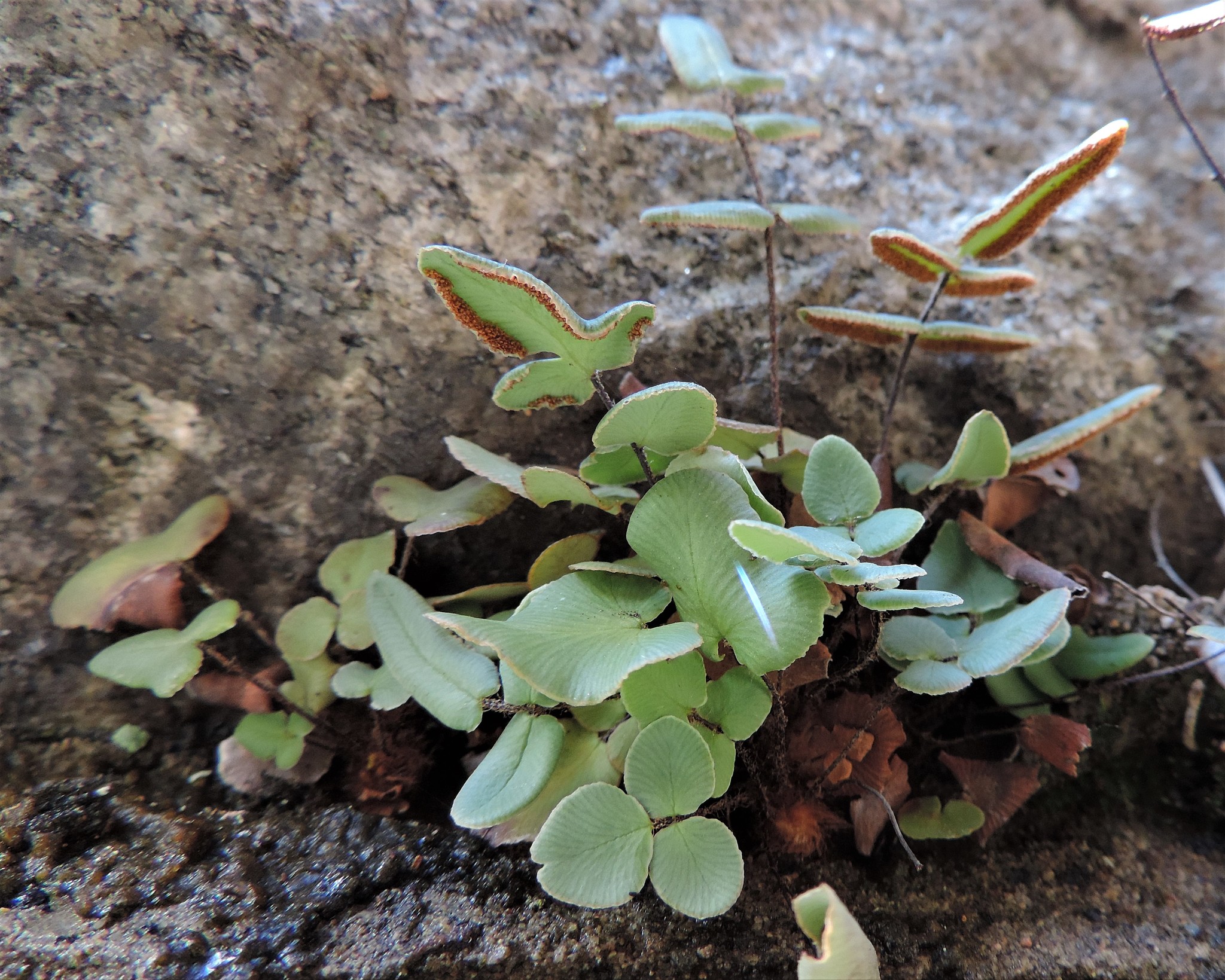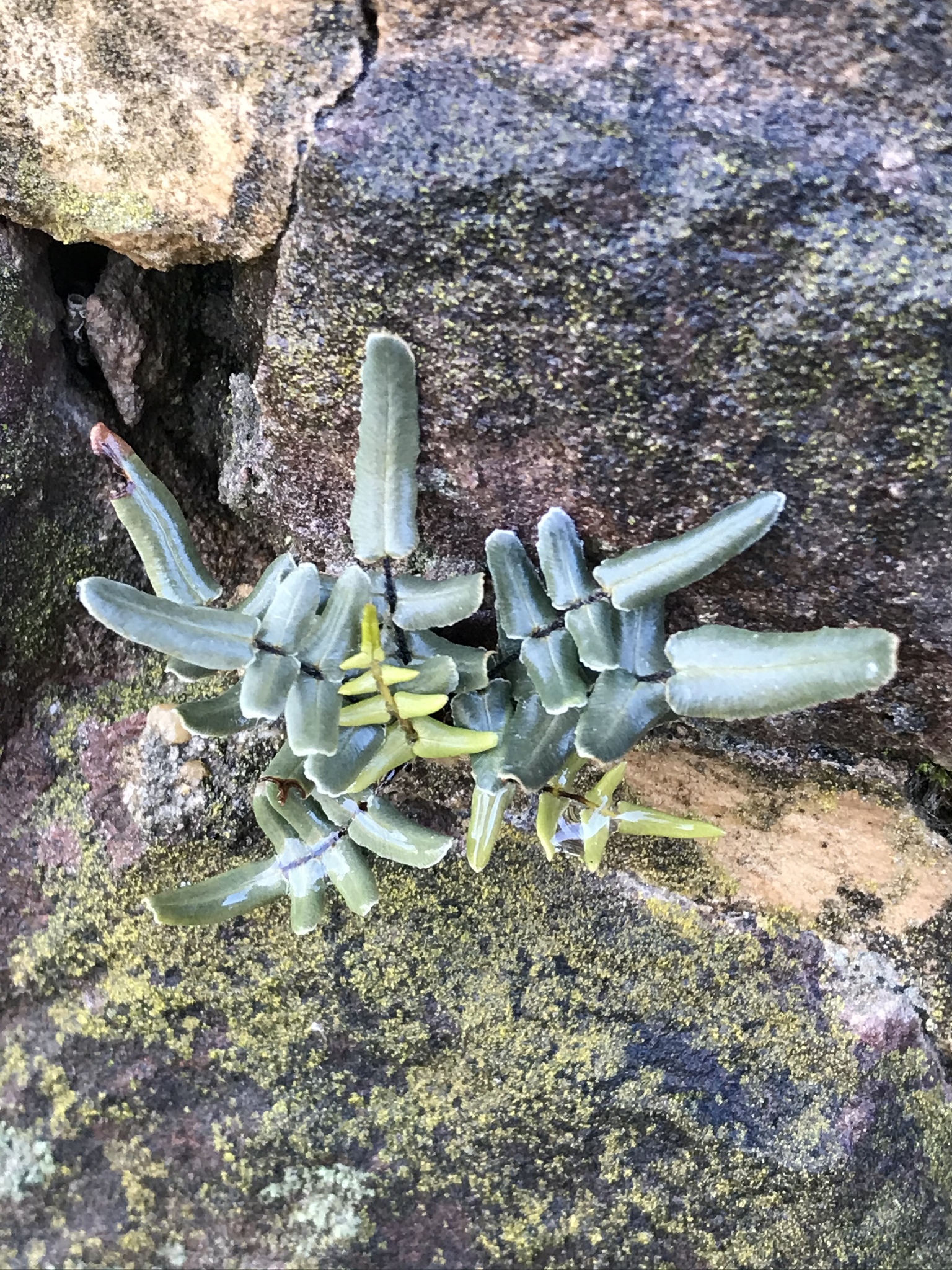Map Snapshot













119 Records
Status
Purple Cliffbrake grows over all of eastern North America and much of the western United States, as well as in Central America.
Description
Purple Cliffbrake is a stiff, wiry fern that grows in clumps. The stipe and rachis are reddish-purple and the blades are gray-green. The pinnae are lance-shaped to long and narrow. The lower pinnae are divided into pinnules, sometimes with 1 or 2 basal lobes, whereas the upper pinnae are undivided. On fertile pinnae or pinnules, the margins are rolled under and somewhat cover the sori, which line the undersides of the margins.
The stipe and rachis have short curly hairs on the upper surface, and the lower surfaces of the pinnules have scattered hair-like scales. These features differentiate this species from Pellaea glabella, which generally has few or none of these.
Where To Find
Look for Purple Cliffbrake in cracks or crevices of dry rock outcrops, especially calcareous rocks. It grows out of the mortar in structures built of rock, such as walls like those in the locks of the C&O Canal.
Seasonality Snapshot
Source: Wikipedia
| Pellaea atropurpurea | |
|---|---|

| |
| Scientific classification | |
| Kingdom: | Plantae |
| Clade: | Tracheophytes |
| Division: | Polypodiophyta |
| Class: | Polypodiopsida |
| Order: | Polypodiales |
| Family: | Pteridaceae |
| Genus: | Pellaea |
| Species: | P. atropurpurea
|
| Binomial name | |
| Pellaea atropurpurea | |
Pellaea atropurpurea, commonly known as purple-stem cliffbrake or just purple cliffbrake, is a fern native to North and Central America. Brake is an old word for fern, related to the word bracken. Like many other members of the Pteridaceae, it is a rock plant, needing a calcareous substrate.
P. atropurpurea is an apogamous autotriploid, with 3n=87 (actual base number, n=29), and is one of the historical parents of the hybrid species complex, Pellaea glabella. Apogamy, or the ability to reproduce non-sexually, is common among rock ferns in the Pteridaceae.
Description
[edit]This fern produces clumps of widely arching fronds. The stipe and rachis of the blade are purple, while the blade itself has a blue-gray tinge to it. The upper pinnae are long, narrow, and undivided, while the lower ones are divided into 3–15 pinnules. The pinnae are, for the most part, opposite. Fertile fronds are longer and more heavily divided. They produce sori, which lack a true indusium, within the inrolled margins of the pinnae.
This plant may be distinguished from the similar Pellaea glabella by its larger form and by the presence of hairs on the leaf axis (the main leaf stem) and on the underside of the leaflet midribs, which are absent in Pellaea glabella (as reflected in its common name smooth cliffbrake).
Ecology
[edit]Pellaea atropurpurea grows in the crevices of dry limestone cliffs, rocky slopes, crevices in alvars,[2] and mortared walls. It is endangered in Florida, Iowa, and Rhode Island. It has become extinct in Louisiana since the limestone caprock of a salt dome at Winfield, the only location for the fern in the state, was quarried away.[3]
References
[edit]- ^ "NatureServe Explorer 2.0 - Pellaea atropurpurea Purple-stem Cliffbrake". explorer.natureserve.org. Retrieved 9 October 2020.
- ^ Catling, P.M.; Brownell, V.R. (1999). "Alvars of the Great Lakes Region". In Anderson, R. C.; Fralish, J. S.; Baskin, J. M. (eds.). Savannas, Barrens and Rock Outcrop Communities of North America. Cambridge: Cambridge University Press. pp. 375–391.
- ^ Moore, David (Spring 2013). "The limestone hill at Winnfield Louisiana" (PDF). Louisiana Native Plant Society Newsletter. 27 (2): 5–7. Archived from the original (PDF) on 2013-11-10. Retrieved 2013-11-10.
Other sources
[edit]- Boughton, C. (2005). Ferns of Northeastern and Central North America. New York: Houghton Mifflin.
- USDA, NRCS (n.d.). "Pellaea atropurpurea". The PLANTS Database (plants.usda.gov). Greensboro, North Carolina: National Plant Data Team.
- Windham, Michael D. (1993). "Pellaea atropurpurea". In Flora of North America Editorial Committee (ed.). Flora of North America North of Mexico (FNA). Vol. 2. New York and Oxford: Oxford University Press – via eFloras.org, Missouri Botanical Garden, St. Louis, MO & Harvard University Herbaria, Cambridge, MA.
